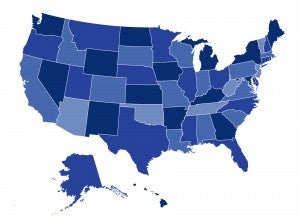
By Sabrina Corlette, Kevin Lucia and Julie Andrews
The Affordable Care Act’s state-based health insurance marketplaces were created to encourage insurers to compete for enrollees on price and quality. And indeed, marketplace consumers have, on average, 30 plans to choose from and 80 percent of them will have a monthly premium of $100 or less in 2017. The incoming administration and Congress’s proposals to repeal the ACA, however, will likely lead to fewer plan options and significantly higher premiums for consumers in 2018.
In the face of projections that repeal of the ACA will lead to 22 million to 30 million Americans losing coverage, some congressional leaders have called for a multiyear transition period. During this time, the ACA’s insurance reforms and subsidies would remain in place until a replacement plan is enacted. But the uncertainty that arises from this transition period, combined with an unforgiving insurance product and premium rate development calendar upon which the market relies, will cause major disruptions for consumers.
In an ongoing series of articles for The Commonwealth Fund, CHIR experts partner with Julie Andrews of Wakely Consulting Group to assess the tight timelines insurers face to bring a health insurance product to market and how insurers could be affected by looming Congressional action. Read more here.

